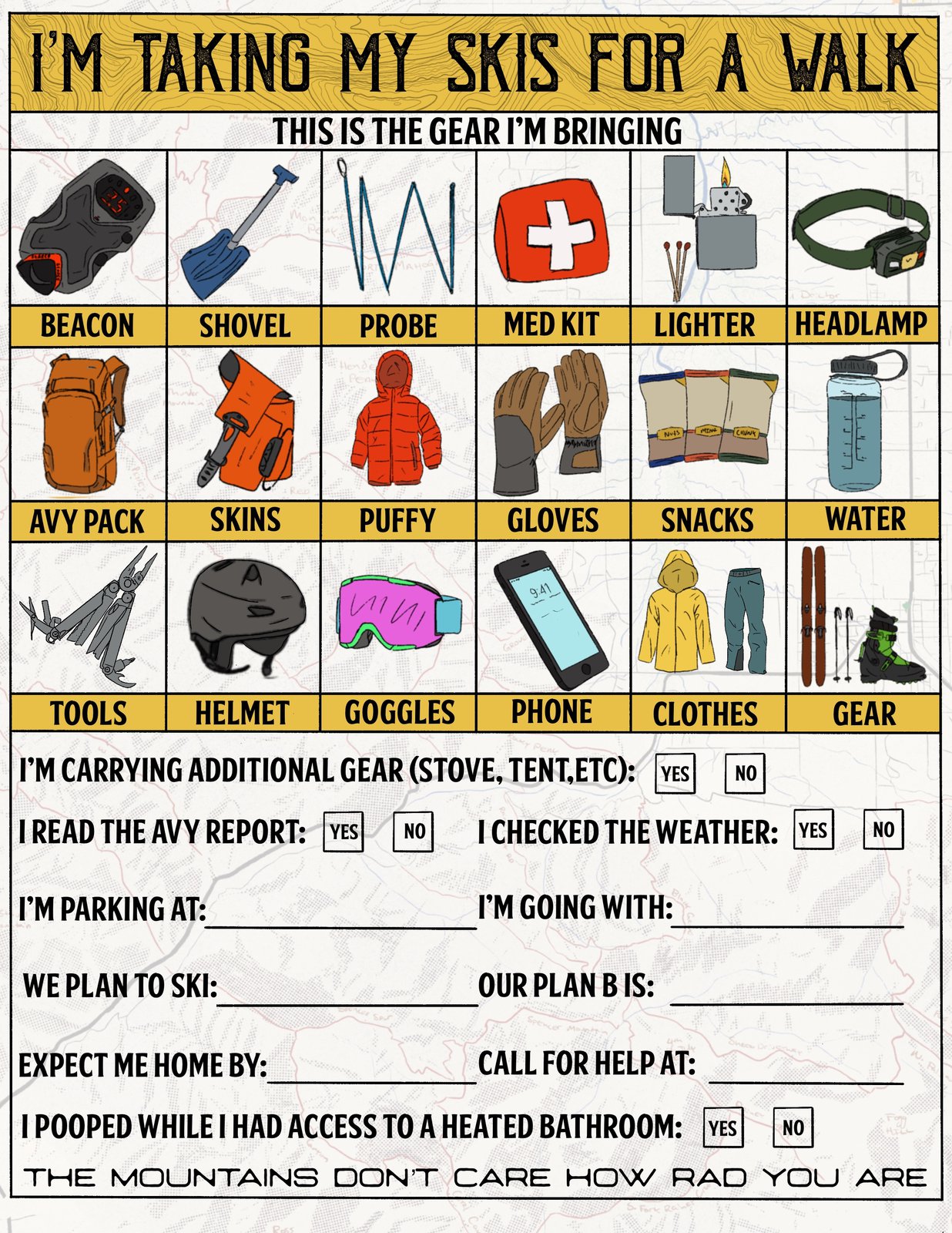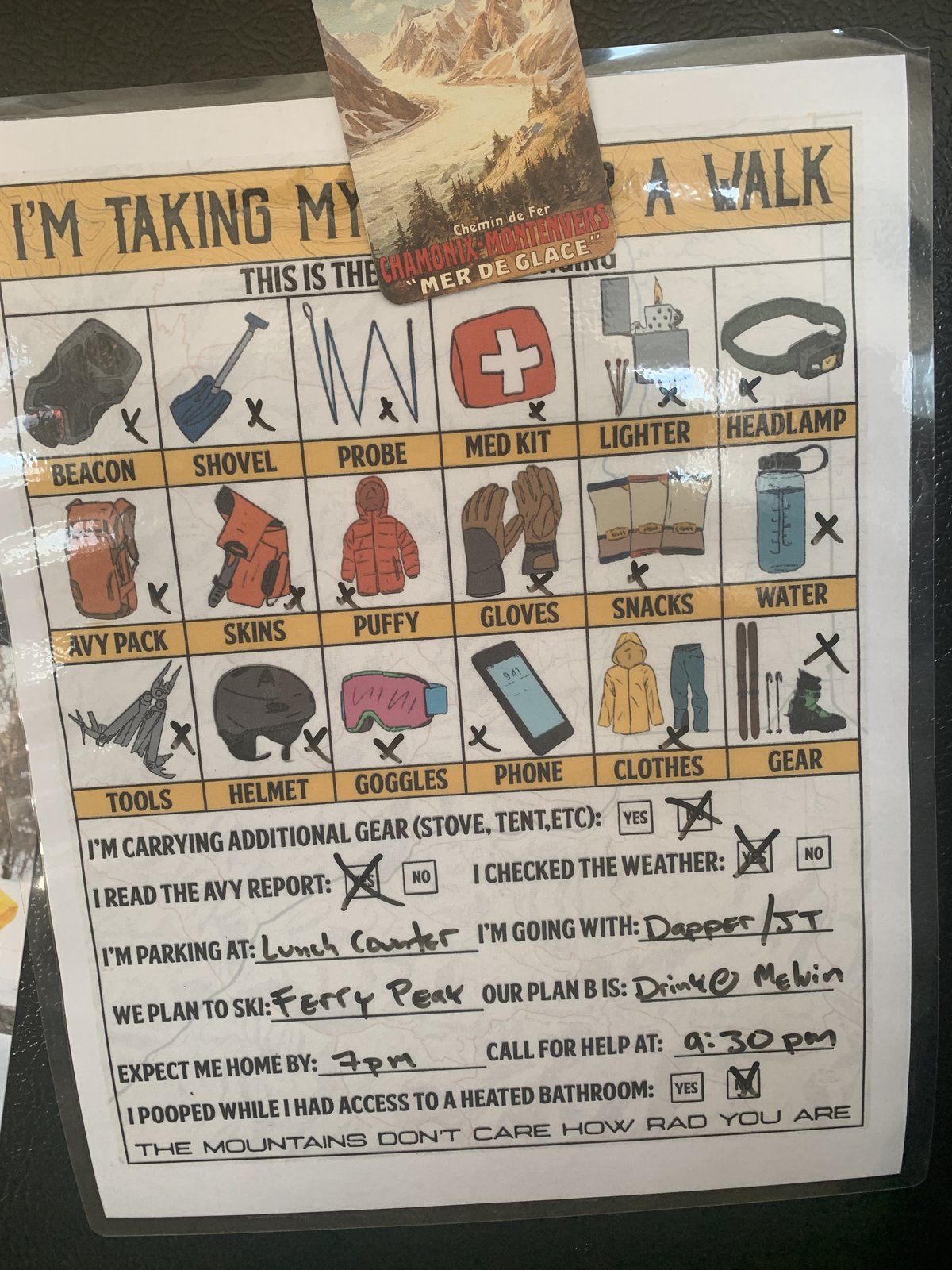While I'm hardly a veteran backcountry skier, the biggest thing I've learned from my time setting bad skin tracks and volunteering on our local Search and Rescue team is that systems help build margins of safety. The more routine you can build into planning your backcountry endeavors, the less chance there is of you dropping the ball big time. That's why I've put together this checklist:

It helps me think through how prepared I am before I even leave the house. If I had a dollar for every time a touring partner has shown up without goggles or missing a jacket, or the wrong skins, or no phone, I'd be able to buy myself a six-pack of something nice. And in the hurry to get out the door in the morning, it's easy to overlook essential items. So I've put together this checklist of a few of the things I've noticed people tend to forget.
On top of that, it's really important to leave information on where you're going, what you plan to do, and when you'll be back. This helps potential rescuers assess the situation, and gives you an extra layer of safety. That really hit home for me when I got stuck in a cave overnight a few years ago. Because we'd left detailed plans and gear lists with a friend's wife, she was able to give Search and Rescue a good idea of how prepared we were, how much trouble we were potentially in, and how urgent our need was. Because she had this info, we had time to self-extract from the cave and SAR didn't have to put themselves at risk.
And while a sticky note on the kitchen counter can do the trick, I've found it really helps me to have a template to fill out. It forces me to think through my decisions before I even make them, and articulate my goals and level of preparedness for the day. So I've included some easy questions on the bottom.
How to Use this Sheet
The image above is formatted to print on a 8.5x11 sheet of paper, make sure it's positioned for your printer's bleeds. I like to laminate mine and put it on the fridge like this:

I have a dry-erase marker that lives on top of the fridge. Every time I'm headed out the door to go ski in the backcountry, I can fill out this sheet and leave it for roommates to refference. When I get home I can just wipe off the marker and use it for the next tour.

It's a simple way to make sure I'm prepared and in the right headspace before I head out the door. I hope it helps you do the same. Feel free to share with your partners, and anyone else you think could benefit from it. And let us know in the comments: What routines and systems do you use to stay prepared and safe in the backcountry?


Comments